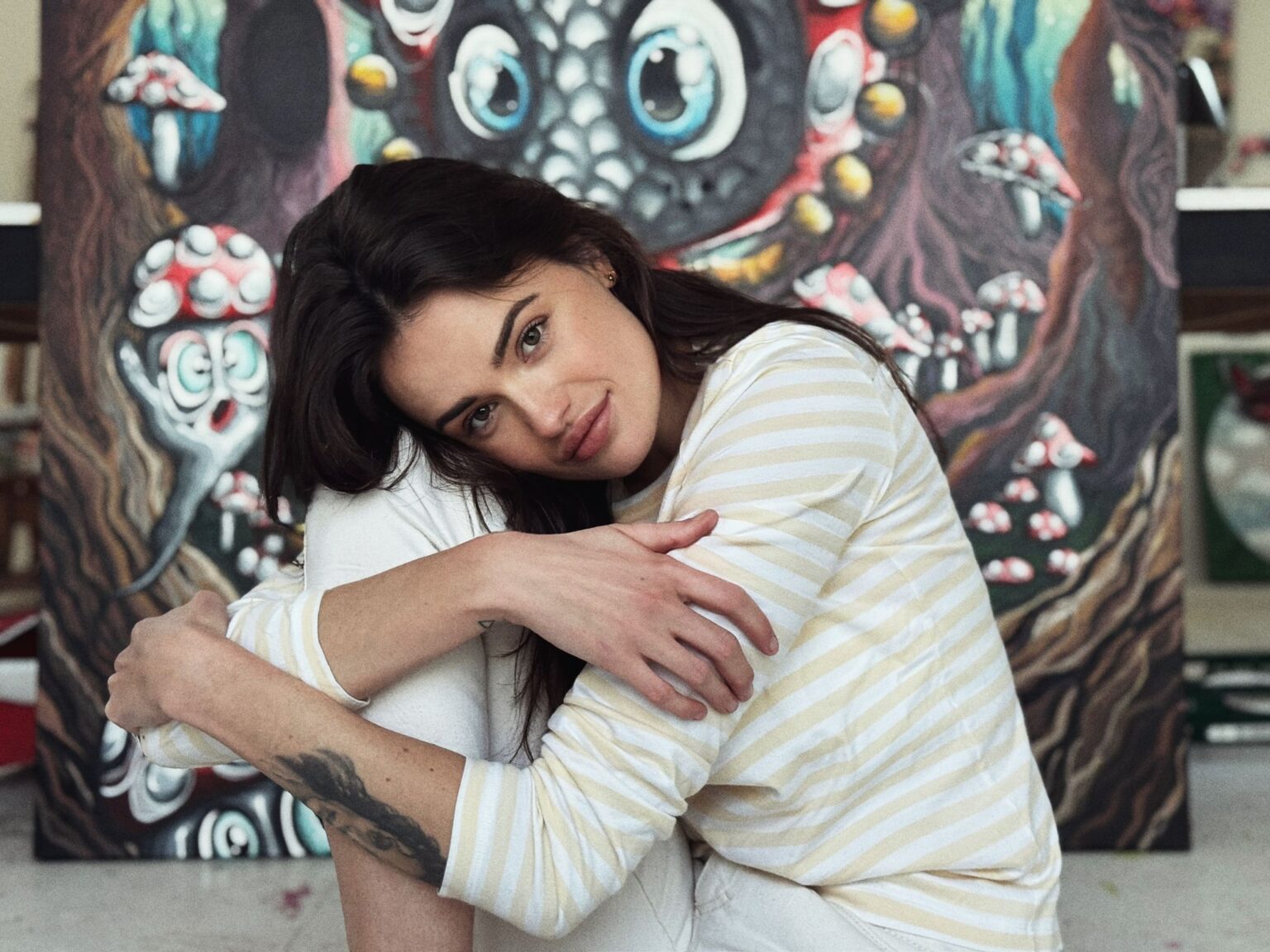Loes Van Delft -Could You Love Me Anyway
This work by Loes Van Delft immediately asks the question everyone knows deep inside: “Could You Love Me Anyway?“ It confronts, moves and challenges. The powerful black letters against the bright pink background immediately grab attention. Next to it, Van Delft’s iconic cartoon-like figure, with a melancholy look and subtle red details, symbolizes vulnerability and hope.
First you see the playfulness of the shapes and colors. Then you discover the layering: a visual balance between irony and emotion. It is precisely this contrast that makes the work powerful and universally recognizable. This makes it not only an eye-catcher, but also a mirror of feelings.
This artwork combines pop art, street art and contemporary art in a style that is loved worldwide. Moreover, Loes van Delft is a name that continues to grow in the international art world. As a result, each work has not only aesthetic value, but also a clear collector’s value.
Loes Van Delft is one of the most talked-about artists of her generation. Her style is unmistakable: a unique blend of pop art, street art and contemporary art, allowing her to effortlessly bridge the gap between playfulness and sophistication.
First of all, her recognizable character Pjipje stands out. This figure symbolizes innocence and humor, but at the same time also strength and willfulness. Moreover, it gives each work an immediate emotional charge. As a result, her art appeals to both seasoned collectors and new art lovers.
In addition, her career is impressive. Her works have been exhibited internationally. As a result, she enjoys worldwide recognition and her name is firmly established in the contemporary art world.
What makes Loes Van Delft extra special is her ability to combine traditional painting with the energy of street art, creating works that are both accessible and exclusive. Anyone who brings a work of hers into their home is not only choosing aesthetics, but also a valuable investment in timeless creativity.

Een certificaat van echtheid (COA) is een document van een gezaghebbende bron dat de echtheid van het kunstwerk verifieert. Veel COA’s zijn ondertekend door de kunstenaar, maar andere zijn ondertekend door de vertegenwoordigende galerie of de drukker die samen met de kunstenaar aan het werk heeft gewerkt. Voor werken op de secundaire markt zijn gemachtigde nalatenschappen of stichtingen vaak de uitgevende partij.
COA’s bevatten meestal de naam van de kunstenaar, de details (titel, datum, medium, afmetingen) van het werk in kwestie en waar mogelijk een afbeelding van het werk.